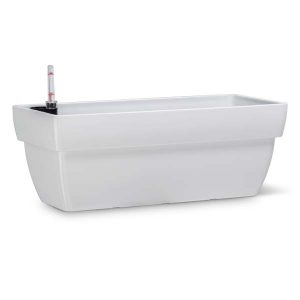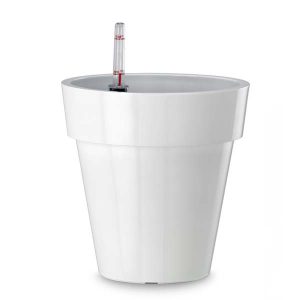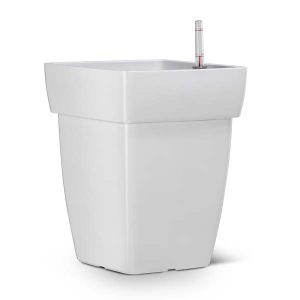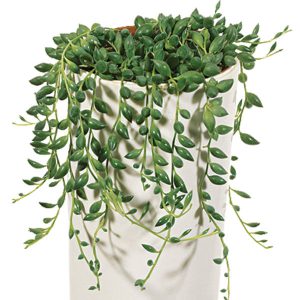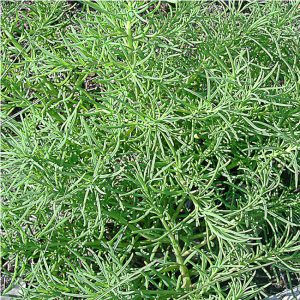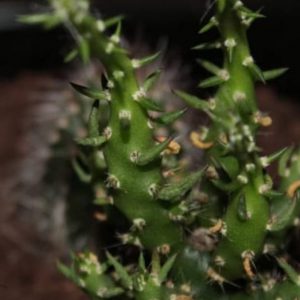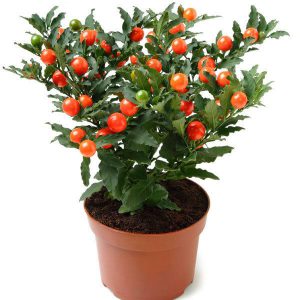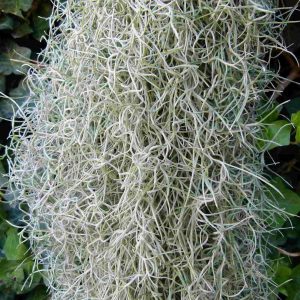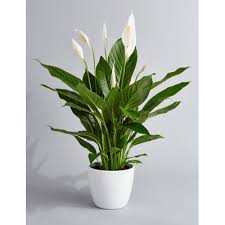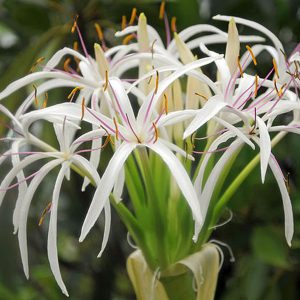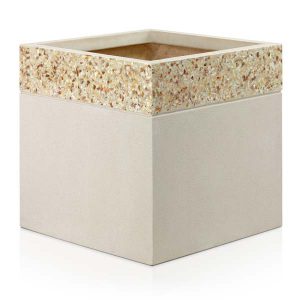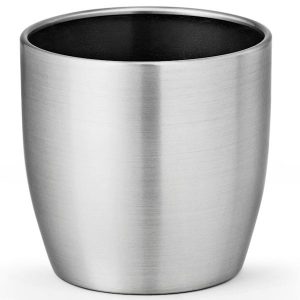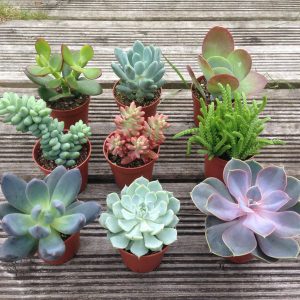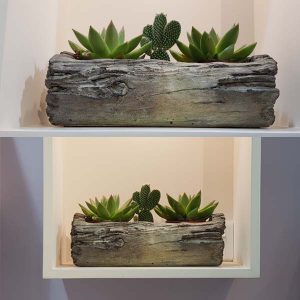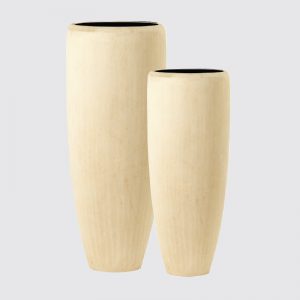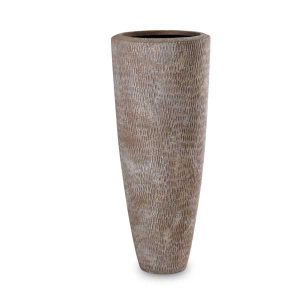Shop
Senecio rowleyanus
If you’re looking for an easy succulent to grow indoors, opt for the string of beads (Senecio rowleyanus) plant. In addition to its carefree growth habit, this interesting houseplant can provide a unique focal point in the home. Sprawling over the edges of containers or hanging baskets, the string of beads plant resembles a beaded necklace with its fleshy green, pea-like foliage. Learn more about growing string of beads houseplant so you can also enjoy its unique characteristics and ease of care
AED 110.00Read more
Sesuvium
No beating around the bush — this is one salty succulent. Eaten raw, the leaves proffer a salty and slightly bitter or acidic flavour with a crunchy succulent texture — great for pickling! When cooked, the flavours and textures soften suitably for a variety of savoury dishes and garnishes. Sea Purslane leaves are a good source of vitamin C and rich in the naturally occurring steroid, ecdysterone. This plant is also known for its haemostatic and anti-venom properties.
AED 96.00Add to cart
Soguaro Cactus
A saguaro cactus (Carnegiea gigantean) is a columnar cactus that is native to the Sonoran desert in Arizona, California and Mexico. It provides cavity nesting for a variety of birds, and can be used as a food source for humans and wild animals. Because sustained freezing temperatures will quickly kill a saguaro, some gardeners must bring their cacti indoors for the winter. Whether you are growing a saguaro for permanent indoor occupation, or simply saving the cactus from freezing temperatures, the proper care of the cactus is required to help it stay healthy and thriving.
AED 60.00Read more
Solanum pseudocapsicum
Very white or whitish small star shaped flowers bloom during summer, followed by berries that look just like small tomatoes. In fact they may even taste similar to tomatoes, but they’re toxic when eaten.
Berries begin green in color, then turn yellowish, orange and red, and are the main attraction rather than the tiny flowers. Flowers last until just before winter and the berries can last for months after the festive holiday period
AED 35.00Read more
Spanish Moss – (Air plant )
The name “Spanish moss” actually originated as “Spanish beard”. Native American tribal people called it “itla-okla”, which meant “tree hair”. Some French thought that it resembled a conquistador’s long beard and began calling it “Barbe Espagnol”, or Spanish beard. While the Spaniards retaliated by referring to it as “Cabello Frances”, or French Hair, it never caught on.
Over time, Spanish beard became Spanish moss, what it’s most commonly known as today. The Polynesians occasionally refer to Spanish moss as “Kali’s hair”, and throughout its natural environment it’s still called “tree hair”, simply because it resembles hair so much!
AED 125.00Read more
Spathiphyllum(Peace Lilly)
A long-time favorite of those with a green-thumb and even those without, Spathiphyllum, commonly known as the peace lily, is an adaptable and low-maintenance houseplant. Peace lilies are not true lilies (Lilium spp.) at all, but rather a member of the Araceae family. Its flowers resemble those of the calla lily (both plants belong to the same family) and is the reason for its name. The showy part of the flower features a white, hoodlike sheath (known as a spathe) which resembles a white flag of surrender.
There are a wide variety of sizes and types of peace lilies. Most serve as floor plants since they can reach three feet tall and grow wide with big, bold leaves. Mauna loa supreme (a Spathiphyllum hybrid) is the standard midsize type. It grows up to four feet tall and features bronze-green foliage with an abundance of large, cupped spathes.
AED 35.00Add to cart
Spider Lily – Crinum Asiaticum
- Botanical Name: Crinum asiaticum (syn: Crinum amabile)
- Common Name: Giant Crinum Lily, Grand Crinum Lily, Spider Lily, Asiatic Poison Bulb, Poison Bulb, Poison Lily, Seashore Lily, Bakong (in Malay)
- Family name: Amaryllidaceae (Onion Family)
- Etymology: The genus name Crinum originates from the Greek, Krinon, which means white lily, referring to the white or whitish flowers which most species produce
- Origin: Indian and Western Pacific Ocean coastlines (Tropical Indo-Pacific)
- Plant type: Ornamental flowering bulbous perennial herb
AED 30.00Add to cart
Stromanthe sanguinea trioster
Growing Stromanthe sanguine gives you a super attractive houseplant that can be used as a Christmas gift plant. Foliage of this plant is of red, white and green coloration. A relative of the popular prayer plant, stromanthe houseplants are sometimes thought to be difficult to maintain. Following a few basics of stromanthe plant care allows you to demonstrate your green thumb and keep the attractive specimen growing and thriving year round.
When growing the Stromanthe ‘Triostar’ plant outside, place it in a shaded area with morning sun or in a total shaded area if possible. The plant can take more sun in cooler areas. Now that you’ve learned how to grow a stromanthe, give it a try, indoors or out
AED 80.00Read more
Succulent Arrangement with Penguin clay
AED 85.00 Original price was: AED 85.00.AED 80.00Current price is: AED 80.00.Add to cart
Succulent Arrangement with Penguin clay
One number of Succulent Arrangement 8cm to 10cm ht plant arranged in small fiber cement pot with soil mixtures and also one Clay Penguin
AED 85.00 Original price was: AED 85.00.AED 80.00Current price is: AED 80.00.Add to cart
succulent collection
In general, succulents that have bright colors (such as reds, purples and oranges) don’t do well indoors. They require some direct sun and more light than is generally available indoors.
A great place to start is with succulents that are naturally green. A few great examples include Haworthia and Gasteria varieties like the ones pictured below.
AED 130.00Add to cart
Succulent collection
- Unique collection is hand pick to ensure there is no 2-alike, plants may vary from pictures shown as succulents are selected based on season, size, health and readiness
- Succulents come in 2 in. square pots fully rooted in soil, plant measurement will vary as different species grow in different ways: for example, some grow wider, shorter, taller, trailing, etc.
- All succulent packs are carefully packed in shop Succulents retail packaging making these easy to gift
AED 140.00Add to cart
Succulent plants & Cactus with Pot Arrangement
AED 275.00 Original price was: AED 275.00.AED 250.00Current price is: AED 250.00.Add to cart
Succulent plants & Cactus with Pot Arrangement
Two numbers of Succulent plant and one number of Cactus plants 10cm ht arranged in Rectangular Natural wood finish fiber cement pot with soil mixtures and small stones
AED 275.00 Original price was: AED 275.00.AED 250.00Current price is: AED 250.00.Add to cart
Succulents ‘Real Feel’
Succulents
About 60 different plant families contain succulents. Succulent plants often store water in structures such as the leaves and/or stems resulting in parts that are more than normally thickened and fleshy. These parts by retaining water give the plants an advantage in arid climates. In families such as cactaceae, (cactus), Agavoideae, (Agave), and Crassulaceae (crassula), most plants are succulents. The habitats of these water preserving plants are often in areas with high temperatures and low rainfall.
AED 40.00Add to cart
Sunflower plant
Sunflowers are one of the most important oil crops in the world, and are a valuable food source in many countries. Just one ounce of sunflower seeds contains about 6 grams of protein and 14 grams of oils. The fats are almost entirely unsaturated with 9g of polyunsaturated and 3g of monounsaturated fats per ounce (NSA). The oil is high in linoleic acid and is a good source of vitamin E.
- While the plant is small, water around the root zone, about 3 to 4 in. from the plant. To protect the plant, it may help to put snail or slug bait around the stem.
- Once the plant is established, water deeply though infrequently to encourage deep rooting. Unless the weather is exceptionally wet or dry, water once a week with several gallons of water.
Sweet Soil (Garden Soil)
Usually when a person refers to a soil as being sweet, it means the soil is chalky or alkaline as opposed to
AED 500.00Add to cart
syngonium podophyllum
When left unpruned, its vines can grow to be about six feet long and are lovely when trained to climb or allowed to cascade over the sides of a hanging basket. In this article, we will discuss the growing, care and use of Syngonium podophyllum.
AED 30.00Add to cart
Tamarind tree
Tamarind prefers tropical and subtropical, dry and windy climate. It can adapt even to the warm temperate climate, but there it’ll not be very productive. Young plants can’t withstand the cold, while the adults are resistant to temperature till 28 degree Fahrenheit only.
Best planting position is in full sun. For flowering, fruit setting and fruit development, tamarind tree needs clear sky and drier days.
Water saplings deeply when the first inch of soil is dry to the touch. Once established, tamarind trees don’t need watering and can withstand periods of extreme drought conditions without experiencing adverse effects.
Tecomaria capensis – cape honeysuckle
Sometimes I think I must have been part hummingbird growing up. Like those tiny birds, I loved to sip the nectar from the cape honeysuckle plants that I came across in Southern California. I didn’t have their long tongues, though, and I plucked many a flower from the poor shrubs. The blossoms are abundant, though, so my destructive habit didn’t compromise their beauty too much.
AED 55.00Add to cart
Tecomaria Capensis Yellow
Train a climbing vine cape honeysuckle plant on a trellis or other supporting object using plant ties to support the vines. To maintain the shape of shrubs, prune long or unruly branches back to a side branch or bud with sharp pruning shears. Cut off old, damaged or dead branches at their base and remove them. Do this in the springtime before new growth begins.
AED 55.00Add to cart
Terminalia Catappa
- Terminalia catappa is a large tree. It grows to 35 metres tall.
- This tree is wonderful for giving shade…it is a fast grower.
- A decidious tree it can shed its leaves twice a year, the leaves turn into colours of red, copper, gold.
- The tree first drops its leaves when it reaches 3-4 years old.
- The fruits are almond-shaped and green turning brown to purple when ripe.
- In case you do not want the tree to grow very tall – you can cut off the vertical growing stem.
- The tree will then spread sideways.
AED 210.00Add to cart

